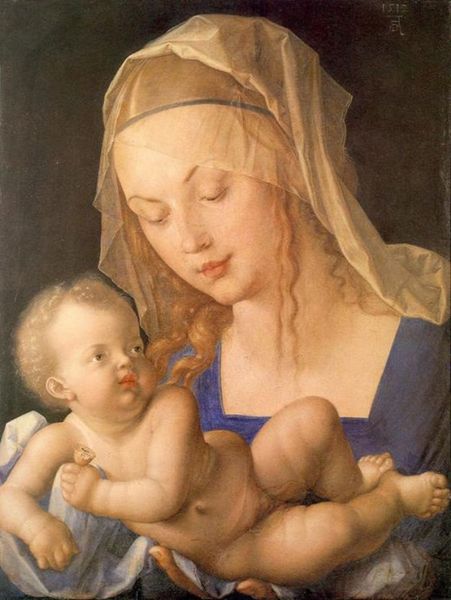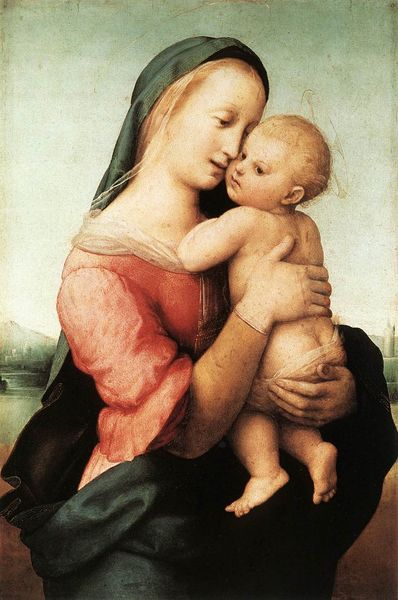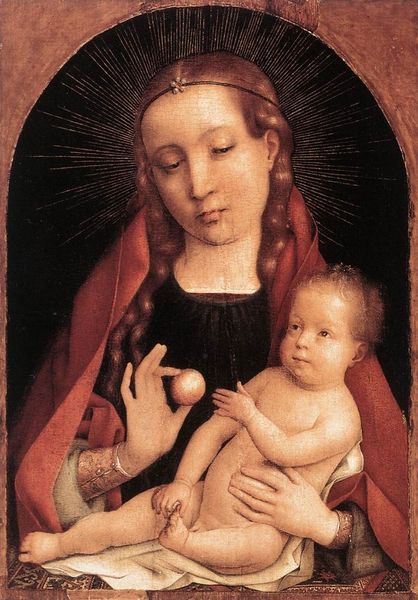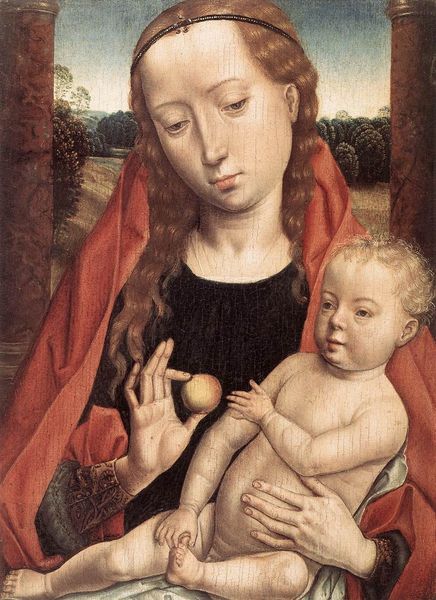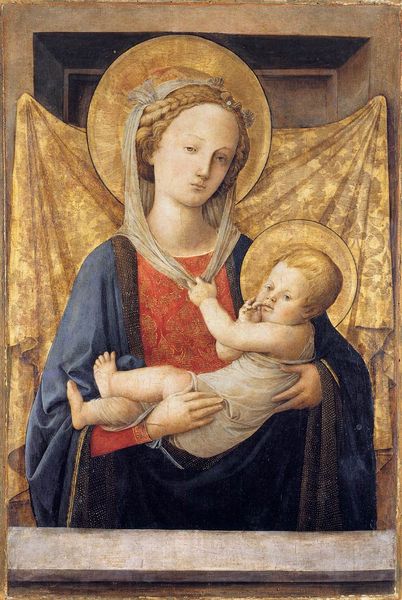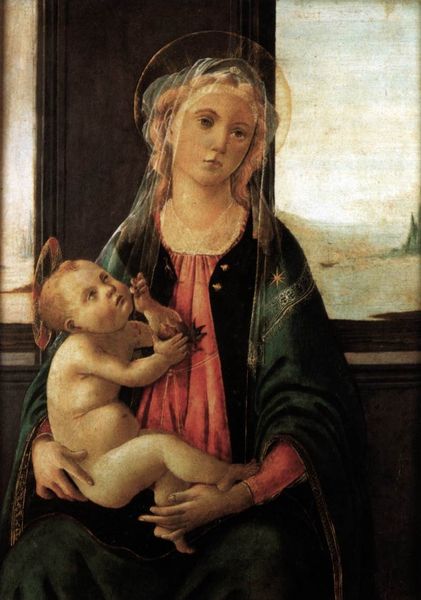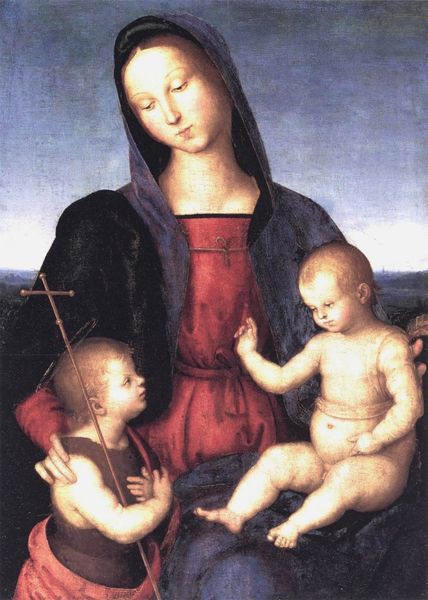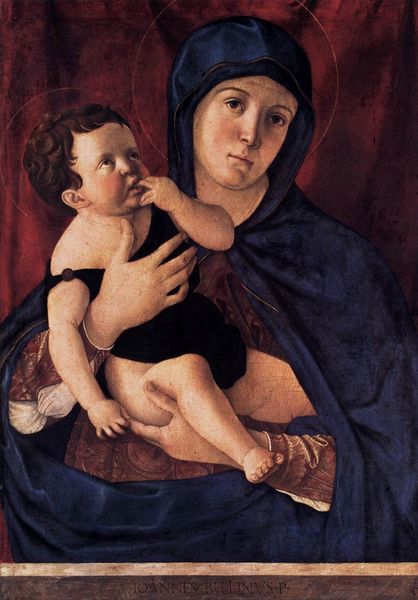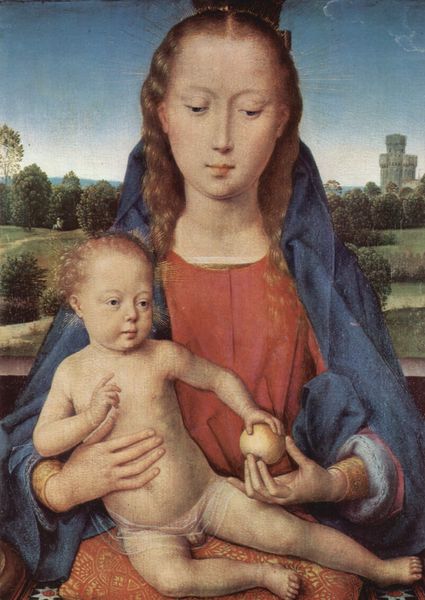
tempera, oil-paint
#
portrait
#
high-renaissance
#
tempera
#
oil-paint
#
figuration
#
11_renaissance
#
oil painting
#
child
#
portrait head and shoulder
#
christianity
#
history-painting
#
facial portrait
#
portrait art
#
miniature
#
fine art portrait
#
christ
Copyright: Public domain
Mabuse painted this Virgin and Child, likely in the early 16th century, using oil on panel. Oil paint, with its capacity for luminous color and meticulous detail, was the cutting edge of art technology at the time. Look closely, and you can see how the materiality of oil enables Mabuse to mimic textures – the soft skin of the figures, the delicate fabric of the Virgin’s headdress, the gold trim of her dress. Notice the subtle gradations of light and shadow, and how they give the figures a sense of volume and presence. Achieving this level of realism required an intensive studio practice, and the organization of labor. Pigments had to be sourced and ground, brushes carefully maintained. Perhaps assistants helped with the underpainting, leaving the master to apply the final touches. The painting thus represents the skilled labor of its maker, as well as the economic system that supported the art production. By attending to these material and social conditions, we can appreciate the artwork not just as a beautiful image, but as a product of its time.
Comments
No comments
Be the first to comment and join the conversation on the ultimate creative platform.
